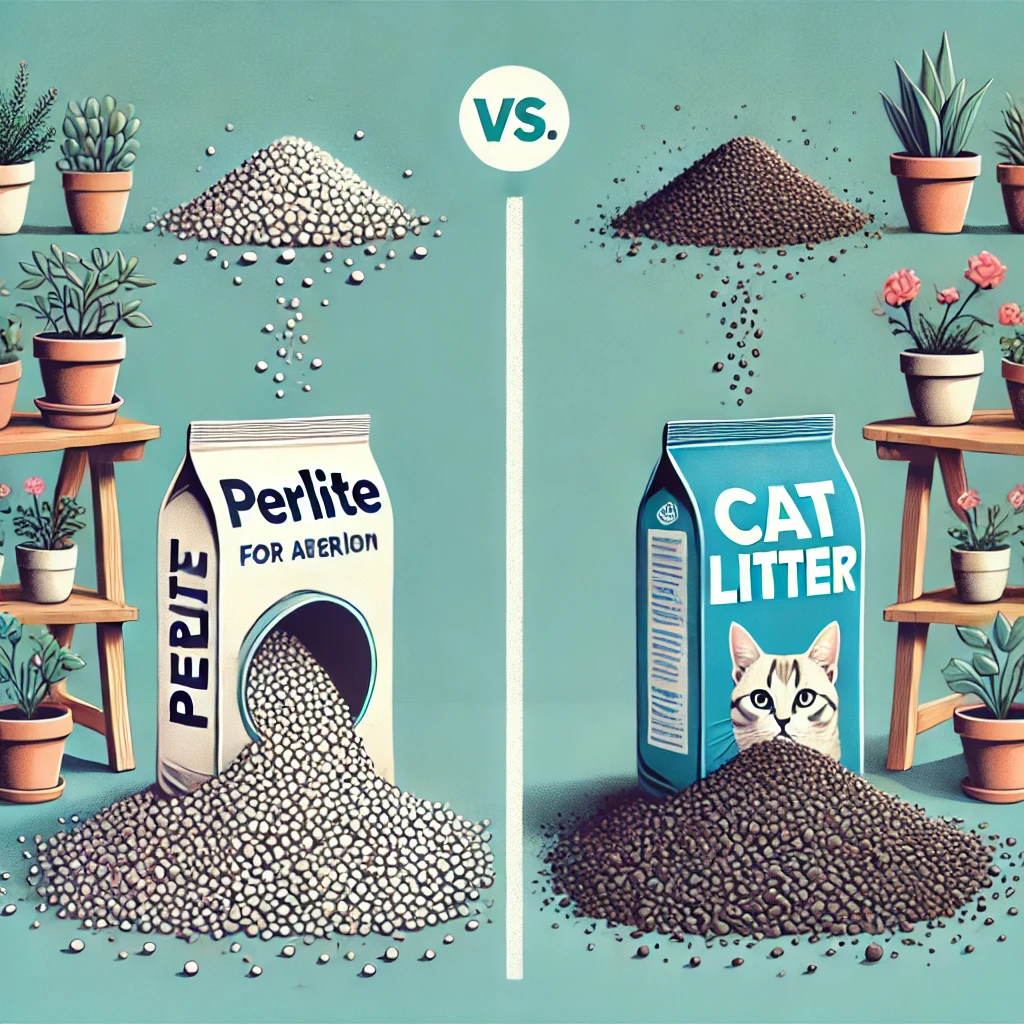Perlite is a common amendment in gardening and horticulture, known for its lightweight and porous properties that help improve aeration and drainage in soil. However, some gardeners have considered alternative materials, such as cat litter, to serve similar functions. This article will explore whether cat litter can effectively replace perlite, discussing the benefits, challenges, and trade-offs involved in using cat litter as a soil amendment.
Understanding Perlite and Its Role in Gardening
Perlite is a volcanic glass that, when heated, expands into small, lightweight, and porous particles. It is prized for several fundamental properties:
Aeration: Perlite helps prevent soil compaction, allowing roots to access oxygen more efficiently.
Drainage: Its porous structure promotes proper water drainage, reducing the risk of root rot and fungal growth.
Lightweight: Because it is so light, perlite doesn’t add significant weight to pots or soil beds.
Perlite is typically used in potted plants, seed-starting mixes, and hydroponic systems. While it is highly effective, perlite can be costly and isn’t always available in all locations, prompting gardeners to look for alternatives like cat litter.
Can Cat Litter Replace Perlite? Key Factors to Consider.
 Cat litter is an easy substitute for perlite because of its granular form. However, it’s essential to understand that not all cat litters are created equal, and they vary in composition and properties. Here are the significant factors to consider before deciding whether to use cat litter as a perlite substitute:
Cat litter is an easy substitute for perlite because of its granular form. However, it’s essential to understand that not all cat litters are created equal, and they vary in composition and properties. Here are the significant factors to consider before deciding whether to use cat litter as a perlite substitute:
1. Composition of Cat Litter
Cat litters are typically made from various materials, including:
Clay: Most conventional cat litters are made from clay, which absorbs and keeps water rather than provides aeration. Clay-based litter can cause soil compaction over time, which is the opposite of what perlite achieves.
Silica Gel: Some litters are made of silica gel, which absorbs moisture effectively but doesn’t offer the aeration that perlite does.
Biodegradable Options: Litters made from materials like corn, wheat, or recycled paper are less common than perlite substitutes, as they break down in the soil and might add nutrients or organic matter rather than improve drainage and aeration.
If you decide to experiment with cat litter, look for a non-clumping, non-scented, and lightweight silica-based litter, which may have some resemblance to perlite’s qualities.
2. Absorbency and Water Retention
One of the major advantages of perlite is its neutral role in soil moisture. While it allows water to flow through, it doesn’t hold on to significant amounts of water. In contrast, clay-based and silica-based cat litter are highly absorbent, which can lead to excessive moisture retention in the soil.
Using moisture-absorbing litter as a soil amendment could lead to waterlogged conditions for plants, increasing the risk of root rot and fungal diseases. For plants that require good drainage, this is a severe drawback.
3. Soil Aeration and Compaction
Perlite prevents soil compaction, promoting healthy root growth and oxygen access. However, many types of cat litter, especially clay-based and clumping litter, can cause soil to become compacted. This can lead to poor aeration, stunted root growth, and decreased overall plant health.
In particular, clumping cat litter should be avoided, as it hardens when wet and can create dense, airless zones in the soil, essentially suffocating plant roots.
Potential Benefits and Drawbacks of Using Cat Litter as a Perlite Substitute

Benefits:
Cost and Availability: Cat litter is often cheaper and more readily available than perlite, especially in areas where perlite is challenging to find.
Silica-Based Litter Similarities: Non-clumping silica-based cat litter may offer some similarities to perlite in terms of lightweight structure and limited absorbency. However, it still needs to be a perfect match.
Drawbacks:
Risk of Soil Compaction: Most cat litter, particularly clay-based types, will cause soil compaction rather than preventing it.
Water Retention: Cat litter retains moisture, which can be detrimental to plants needing well-draining soil.
Potential Contaminants: Some cat litters contain added chemicals, fragrances, or deodorizers, which can harm plants or introduce toxins to the soil.
Challenges and Trade-Offs: When Might Cat Litter Work as a Substitute?

In specific cases, using non-clumping, non-scented, silica-based cat litter might work as a temporary substitute for perlite, mainly if perlite is unavailable. However, this should be done with caution and for plants that can tolerate some moisture retention.
Alternative Approaches:
If cat litter isn’t an ideal substitute, other soil amendments might provide similar benefits to perlite, such as:
Vermiculite: Another mineral often used to improve soil aeration, though it keeps more moisture than perlite.
Pumice: A volcanic rock similar to perlite but slightly denser, which can aid in both aeration and drainage.
Rice Hulls or Bark Chips: These organic materials can improve aeration and drainage temporarily, though they will decompose.
Conclusion:
While using cat litter as a substitute for perlite may seem like a convenient and affordable choice, it is not recommended because of the critical differences in material properties.
Cat litter, especially clay-based types, is highly absorbent and prone to causing soil compaction, which is the opposite of what perlite achieves. However, if you choose to experiment, opt for non-clumping, unscented, silica-based litter and monitor soil moisture levels closely.
Ultimately, when considering any substitution, it’s crucial to weigh the specific needs of your plants, the properties of the substitute material, and the potential impact on soil health. For most gardeners, investing in true perlite or a similar horticultural amendment will provide the best results for healthy, thriving plants.

